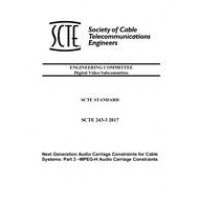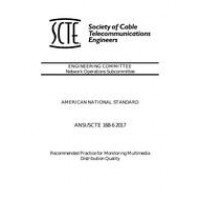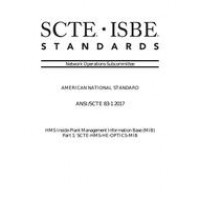SCTE 137-2 2017
- Modular Headend Architecture Part 2: M-CMTS Downstream External PHY Interface
- standard by Society of Cable Telecommunication Engineers, 2017
- Category: SCTE
$50.00
$25.00
The DOCSIS Specifications [RFI2.0] define the requirements for the two fundamental components that comprise a high-speed data-over-cable system: the cable modem (CM) and the cable modem termination system (CMTS). The M-CMTS architecture was designed as an extension to the DOCSIS Specifications to allow for flexibility and independent scaling of certain CMTS functions, and to allow operators to more efficiently use available network resources.
One of the key elements of the M-CMTS architecture is the separation of the downstream physical layer QAM modulation and up-conversion functions from the CMTS, and the placement of that functionality into an "Edge-QAM" (EQAM) device. This separation allows for the development of EQAM products that support both video and DOCSIS, which in turn allows operators to use the same network resources to support multiple types of services such as data, voice, and video.
This document defines an interface known as the Downstream External PHY Interface (DEPI) and associated protocol requirements for the transport of downstream user data between the "M-CMTS Core" and the EQAM. It describes the characteristics of the DEPI interface, provides requirements that must be met by the M-CMTS Core and the EQAM, and also describes various aspects of technical issues that are involved in the implementation and deployment of a DOCSIS system using the M-CMTS architecture.
 PDF
PDF
All of our standards document are available in PDF (Portable Document Format), an electronic, downloadable format.You will be able to download the file in your account downloads.
 Multi-User Access
Multi-User Access
After purchasing, you have the ability to assign each license to a specific user.
 Printable
Printable
At any time, you are permitted to make printed copies for your and your members' reference use.





